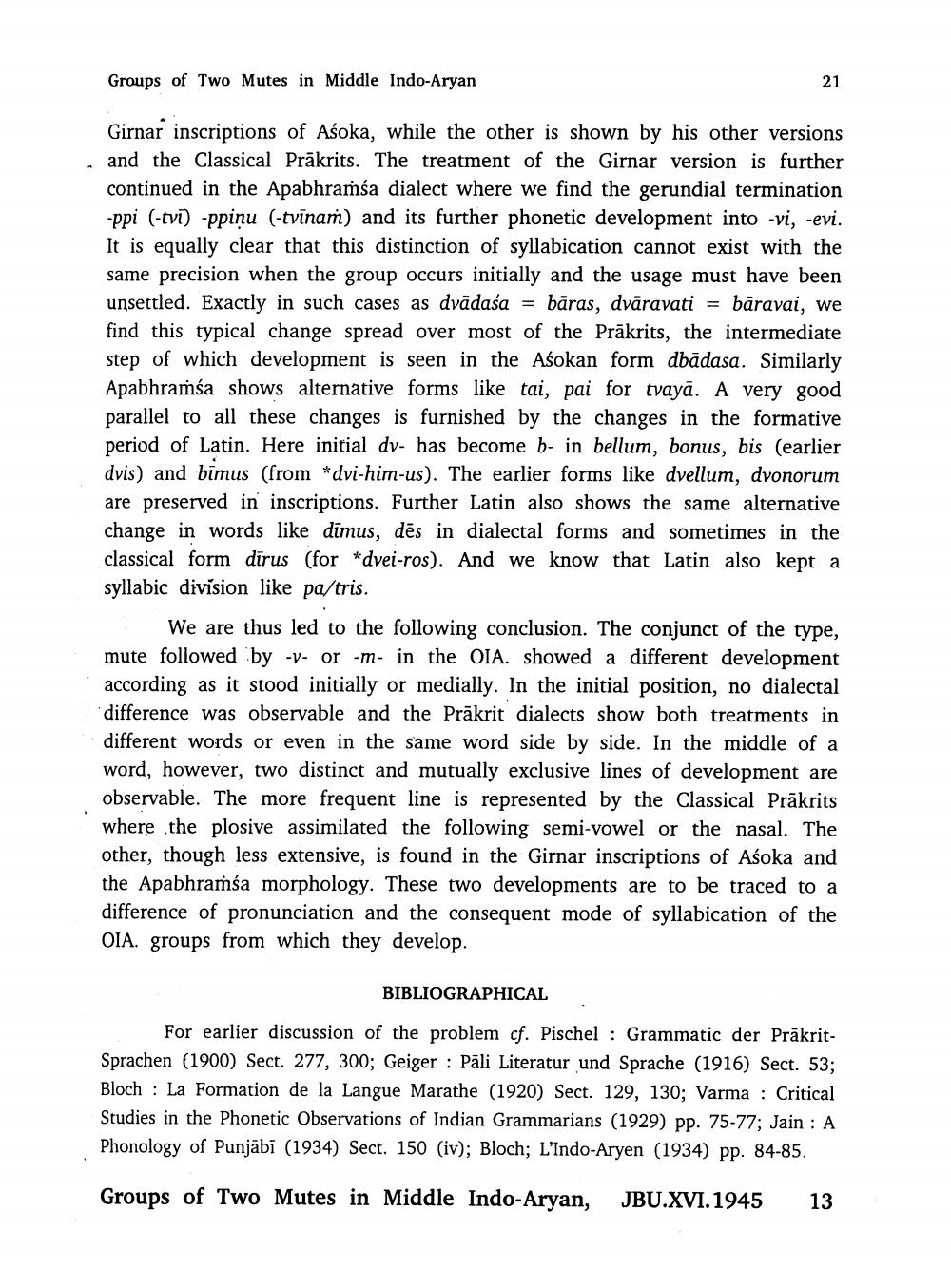________________
Groups of Two Mutes in Middle Indo-Aryan
Girnar inscriptions of Asoka, while the other is shown by his other versions and the Classical Prākrits. The treatment of the Girnar version is further continued in the Apabhramśa dialect where we find the gerundial termination -ppi (-tvi) -ppinu (-tvīnam) and its further phonetic development into -vi, -evi. It is equally clear that this distinction of syllabication cannot exist with the same precision when the group occurs initially and the usage must have been unsettled. Exactly in such cases as dvādaśa = bāras, dväravati = bāravai, we find this typical change spread over most of the Prākrits, the intermediate step of which development is seen in the Aśokan form dbādasa. Similarly Apabhramśa shows alternative forms like tai, pai for tvayā. A very good parallel to all these changes is furnished by the changes in the formative period of Latin. Here initial dv- has become b- in bellum, bonus, bis (earlier dvis) and bimus (from *dvi-him-us). The earlier forms like dvellum, dvonorum are preserved in inscriptions. Further Latin also shows the same alternative change in words like dīmus, dēs in dialectal forms and sometimes in the classical form dirus (for *dvei-ros). And we know that Latin also kept a syllabic division like pa/tris.
We are thus led to the following conclusion. The conjunct of the type, mute followed by -v- or -m- in the OIA. showed a different development according as it stood initially or medially. In the initial position, no dialectal difference was observable and the Prakrit dialects show both treatments in different words or even in the same word side by side. In the middle of a word, however, two distinct and mutually exclusive lines of development are observable. The more frequent line is represented by the Classical Prākrits where the plosive assimilated the following semi-vowel or the nasal. The other, though less extensive, is found in the Girnar inscriptions of Asoka and the Apabhramsa morphology. These two developments are to be traced to a difference of pronunciation and the consequent mode of syllabication of the OIA. groups from which they develop.
BIBLIOGRAPHICAL
For earlier discussion of the problem cf. Pischel : Grammatic der PrākritSprachen (1900) Sect. 277, 300; Geiger : Pāli Literatur und Sprache (1916) Sect. 53; Bloch : La Formation de la Langue Marathe (1920) Sect. 129, 130; Varma : Critical Studies in the Phonetic Observations of Indian Grammarians (1929) pp. 75-77; Jain : A Phonology of Punjābi (1934) Sect. 150 (iv); Bloch; L'Indo-Aryen (1934) pp. 84-85.
Groups of Two Mutes in Middle Indo-Aryan,
JBU.XVI.1945
13




